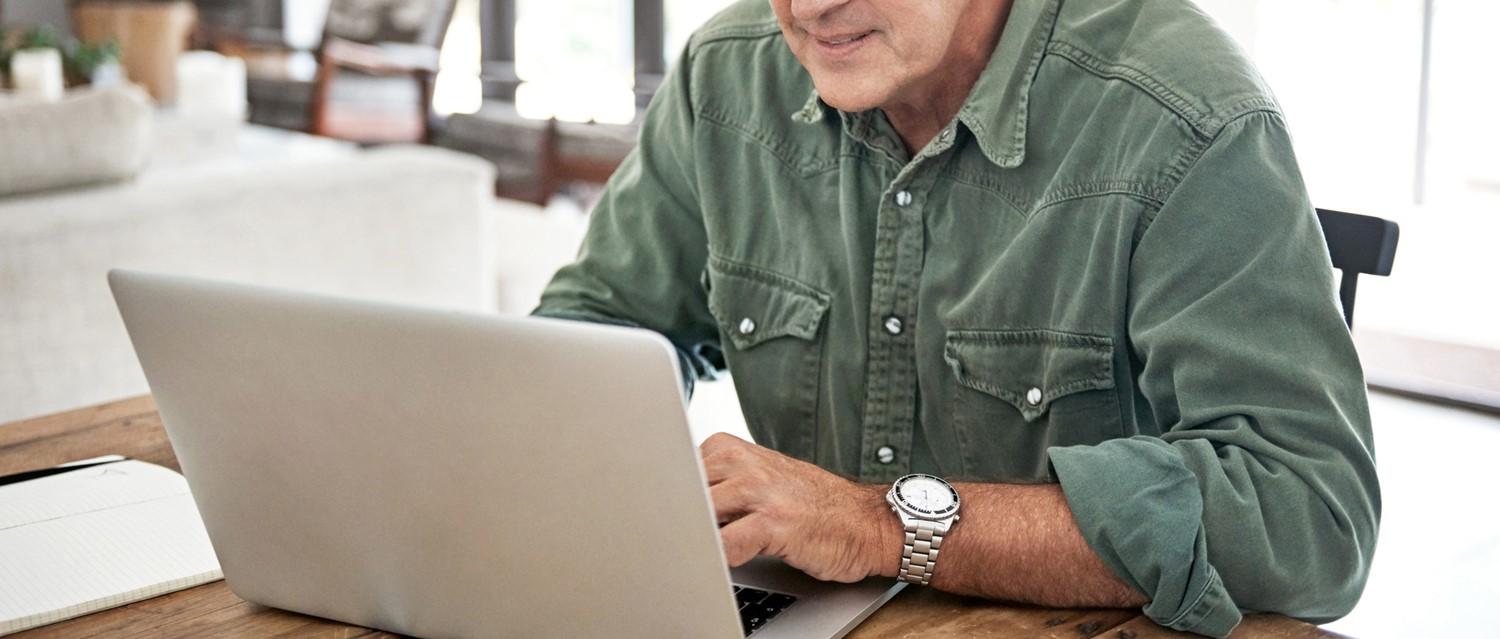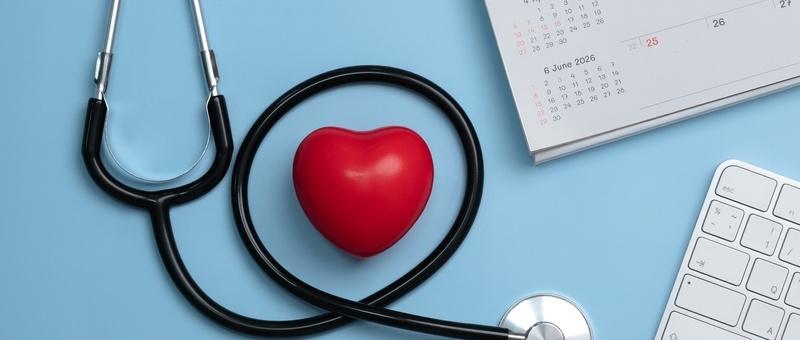
How to get the most out of your remote GP appointment
Peer reviewed by Dr Sarah Jarvis MBE, FRCGPLast updated by Natalie HealeyLast updated 15 May 2020
Meets Patient’s editorial guidelines
- DownloadDownload
- Share
- Language
- Discussion
Many GP appointments have moved to telephone or video consultations due to the coronavirus COVID-19 pandemic. We explore how to get the most out of a video appointment and what you can do to prepare for one.
In this article:
Use Patient's coronavirus checker tool if you have any symptoms of fever or a new cough. Until you have used the tool and been advised what action to take, please stay at home and avoid contact with other people.
The coronavirus pandemic has transformed our lives in numerous ways - it's also brought big changes to general practice. If you want to see your GP at the moment, you're likely to be offered a telephone or video appointment rather than a face-to-face session.
Last year, the vast majority of GP appointments were delivered in person, with just 1% enabled via video conference. But according to the Royal College of GPs, 70% of GP care is now being delivered remotely. Support for patients via telephone or video link has been rapidly established during the crisis.
While this move has been important to reduce the spread of the coronavirus that causes COVID-19, it's likely remote consultations will still have their place in general practice long after the pandemic is over. So if you're offered one, how can you get as much out of a video appointment as a face-to-face one?
Continue reading below
What if you're not tech-savvy?
Over the last couple of months, many of us have become very familiar with video calls as a way of staying connected with relatives without seeing them in person. But not everyone feels confident with this kind of technology. GP Dr Gero Baiarda, from GPDQ, sympathises with those who find the idea of video conferencing daunting, but reassures that the kind used for appointments is really simple for patients. If you don't think of yourself as tech-savvy, that really doesn't matter. As long as you've got a device with a camera and a microphone, you're good to go.
"The technology and software we use for video consultations usually don't require you to install anything or update your computer in any way," he says. "Typically you are texted or emailed a link and all you have to do is click on it at the right time."
If you're a Patient Access user, you can book a video consultation with your doctor for a convenient time using the app. Once booked, the video appointment will appear in the Upcoming Appointments section on the homepage with a 'Join' link to click on at the time and date of the consultation. Once your healthcare professional joins the appointment, the video call will start.
The pros and cons of video appointments
Video appointments are appropriate and safe for many medical issues such as mental health consultations, treatment reviews and minor ailments, says Baiarda. For some issues, there's no substitute for a physical examination though. Video appointments aren't always appropriate for every medical problem. Your doctor will be able to advise you if you need to be seen face to face.
"The main issue is clearly that we cannot physically examine patients," says Baiarda. "We cannot take reliable readings and observations. Although we can request that patients do this for themselves or their children, there are some things that can never be done remotely at home, such as listening to breathing or heart sounds with a stethoscope."
For most problems though, they are far better than no consultation at all. And they can have advantages over a face-to-face appointment because they offer speed and convenience for both doctors and patients. Plus, you don't have to travel to and from the surgery or sit around in the waiting room.
Continue reading below
How to prepare for your video consultation
Video GP appointments may be convenient but they do take a bit of getting used to. A little preparation beforehand can go a long way to ensuring you get the most out of your consultation.
Put it in your diary
As with physical appointments, the first step to a successful consultation is remembering to attend it. You want to make the most of those precious ten minutes, so don't be late. Make sure you're ready to click on the video link at least five minutes before your appointment slot.
Be afraid of the dark
Consider your surroundings carefully. Your doctor will need to see you clearly, so choose a well-lit location. And remember that you're still going to want privacy. You don't want family members interrupting your medical consultation. And you certainly don't want to be out and about when you're discussing personal medical matters.
"It is helpful to be in a private and well-lit area of the home and not out and about. I have previously had patients try to video consult with me while driving their cars or sitting in coffee shops!" reveals Baiarda.
Test your tech
We are at the whim of technology with video appointments and they can be sabotaged by variables beyond our control such as internet problems. But there are things you can do before your appointment to ensure the tech is working as well as it can.
Make sure you're in an area with a decent internet connection for starters. And check your camera and microphone work on the device you will use for the appointment. During the consultation, ensure your microphone is not on mute and your doctor can see you clearly.
Make notes
What are your hoping to get out of this appointment? And what does the doctor need to know to help you? Try to have a list of questions that can reasonably be answered within a ten-minute online consultation, suggests Baiarda.
"Also have a list of your current medication to hand plus details of your allergies and previous medical history. These will all facilitate the process."
If you're consulting about a gynaecological issue, have details such as the dates of your periods to hand. And jot down beforehand details of when different symptoms started.
Can you take your own readings?
If you have any equipment at home to take your temperature, blood pressure or heart rate, that could be a great help to the doctor.
"You could also record details that a GP might find useful, such as when the patient last ate, drank and passed water - these details are especially helpful when assessing children," Baiarda points out.
And don't forget your torch! Having a torch to hand will allow your GP to take a clear look in your mouth over video if necessary.
Patient picks for GP surgery and NHS services

General health and lifestyle
The Patient Charter: Your rights, NHS pledges and responsibilities
The NHS is one of the UK’s proudest achievements. It was founded on the principle that healthcare should be available to everyone, free at the point of use, and based on need rather than ability to pay. To make sure that principle is protected, the NHS Constitution sets out what patients, the public, and staff can expect. Sometimes called the Patient Charter, it pulls together your legal rights (which the NHS must uphold), alongside the pledges the NHS makes to you (commitments that go beyond what the law requires). It also includes your responsibilities as a patient because the NHS can only function if we all use it fairly and respectfully. But what does this mean in practice? And why does it matter in real life, especially at a time when the NHS is under huge strain? Let’s explore.
by Thomas Andrew Porteus, MBCS

General health and lifestyle
What is a fit note and when do you need one?
If you’re too unwell or injured to work, your employer may ask for a fit note. In this article we explain what a fit note is, when you need one, and how to get it.
by Heather Ainsworth
Continue reading below
Article history
The information on this page is peer reviewed by qualified clinicians.
15 May 2020 | Latest version

Ask, share, connect.
Browse discussions, ask questions, and share experiences across hundreds of health topics.

Feeling unwell?
Assess your symptoms online for free
Sign up to the Patient newsletter
Your weekly dose of clear, trustworthy health advice - written to help you feel informed, confident and in control.
By subscribing you accept our Privacy Policy. You can unsubscribe at any time. We never sell your data.